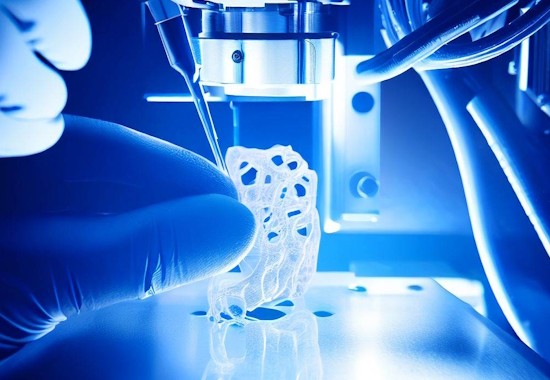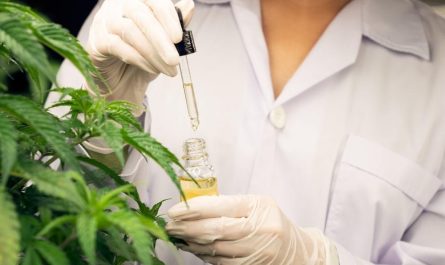3D bioprinting is a process of fabricating biological materials with biologically compatible inks in a layer-by-layer manner for developing viable three-dimensional tissue and organ construct. 3D bioprinting technology utilizes 3D printing technology and principles of tissue engineering and regenerative medicine for developing three-dimensional functional living and non-living biological products.
Significance and Advantages of 3D Bioprinting
3D bioprinting offers several significant advantages over conventional regeneration techniques. It allows precise controlled deposition of bioink materials containing living cells, growth factors, and extracellular matrices to fabricate complex living tissues and organ constructs matching the mechanical and biological properties of natural tissues. This precise controlled technique also enables fabrication of heterogenous composite structures by embedding multiple cell types, growth factors, and biomaterials in defined patterns which is otherwise difficult to achieve through conventional tissue engineering techniques.
Other key advantages offered by 3D Bioprinting include significantly reducing the processing time for tissue growth compared to conventional methods, reducing costs of tissue regeneration procedures. It also empowers researchers and medical practitioners with on-demand fabrication of patient-specific tissue models and implants for testing drugs and performing surgical simulations. 3D printed living tissues can also be utilized for transplantation and regenerative therapeutic purposes.
Progress and Challenges in Developing Working Organs
While significant progress has been made in bioprinting simple 2D and 3D cell-laden structures, developing fully functional printed organs remains a major challenge. Some of the key challenges include developing suitable bioinks that can mimic the dynamic in vivo microenvironment and biomechanical properties to adequately support long term tissue engraftment, maturation, and functionality. Other complexities involve proper integration of diverse supporting cell types and vascularization within the artificial organ construct to enable efficient nutrient/waste exchange at the same levels as native tissues.
However, some promising initial studies have shown progress towards bioprinting working organ constructs. Researchers at Tel Aviv University developed spheroids of liver tissue using bioprinting techniques. Such spheroids have shown potential in supporting liver functions like albumin secretion and drug metabolism over 4-6 weeks in culture. In another study, a team at Heriot-Watt University in Scotland used 3D bioprinting to create blood vessel networks and a cardiac patch containing endothelial cells. When implanted in animal models, it was able to integrate with host vasculature.
Applications across Various Therapy Areas
The areas where 3D bioprinting is demonstrating maximum potential include development of skin substitutes for burn victims and wound healing; fabrication of biomedical implants like bone scaffolds for orthopedic regenerations; development of simplified organs like liver models for pharmacological testing; and bioprinting vascularized cardiac patches and whole heart/liver constructs
Researchers from Wake Forest University developed a bioprinted skin substitute called Living Skin Equivalent. It was composed of fibroblasts and keratinocyte skin cells embedded in collagen gel and arranged in stratified layers resembling natural skin architecture. In clinical trials, it was able show efficacy in promoting wound healing in burn patients.
On the orthopedic front, several 3D printed bone grafts and cartilage scaffolds are in different clinical trial phases. A study published in Science Translational Medicine showed ability of 3D printed bone graft coated with growth factors to regenerate large segmental bone defects in animal models at rates comparable to autografts.
In pharmacology, 3D bioprinted liver and kidney models are fueling drug discovery by enabling more predictive in vitro safety and efficacy testing compared to conventional 2D cell cultures. Successful bioprinting of multi-cellular kidney and liver tissue mimicking native micro-architecture can enable developing better predictive disease and toxicity models.
Future Outlook
With continuous advancements, 3D bioprinting is showing promising potential to transform regenerative medicine and tissue engineering. Combining this technology with sources of autologous cells, advances in biomaterials, and organ maturation strategies will enable developing more biomimetic functional tissue and organ constructs. Ultimately, 3D bioprinting may allow ‘printing’ fully vascularized human organs suitable for transplantation applications to address the rising organ shortage crisis worldwide. Continued research to overcome remaining technical challenges hold much promise to realize this futuristic application of 3D bioprinting. Overall, it is paving way towards establishing ‘organ printing’ as a viable therapeutic solution and revolutionizing treatment of various end stage diseases.
*Note:
1. Source: Coherent Market Insights, Public sources, Desk research
2. We have leveraged AI tools to mine information and compile it



